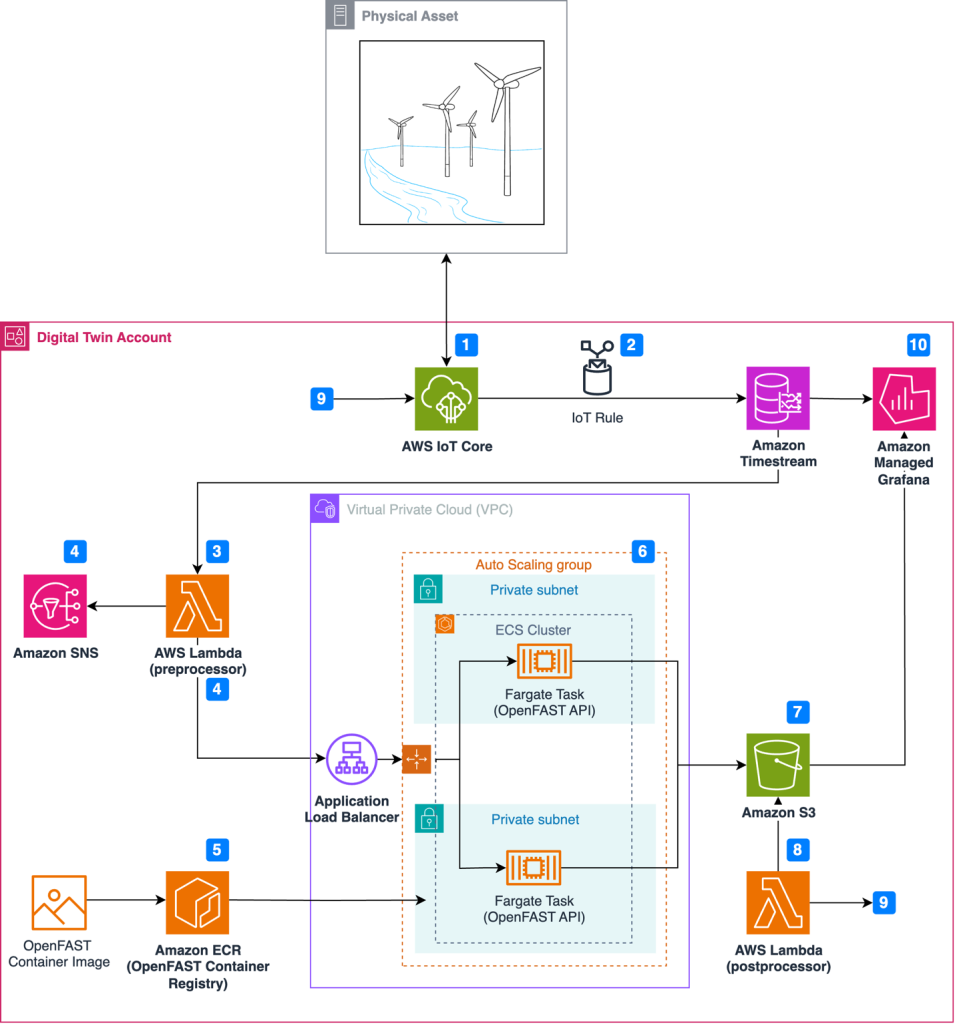AWS Architecture Blog
Category: Database
Physics on AWS: Optimizing wind turbine performance using OpenFAST in a digital twin
Wind energy plays a crucial role in global decarbonization efforts by generating emission-free power from an abundant resource. In 2022, wind energy produced 2100 terawatt-hours (TWh) globally, or over 7% of global electricity, with expectations to reach 7400 TWh by 2030. Despite its potential, several challenges must be addressed to help meet grid decarbonization targets. […]
Top Architecture Blog Posts of 2023
2023 was a rollercoaster year in tech, and we at the AWS Architecture Blog feel so fortunate to have shared in the excitement. As we move into 2024 and all of the new technologies we could see, we want to take a moment to highlight the brightest stars from 2023. As always, thanks to our […]
Converting stateful application to stateless using AWS services
Designing a system to be either stateful or stateless is an important choice with tradeoffs regarding its performance and scalability. In a stateful system, data from one session is carried over to the next. A stateless system doesn’t preserve data between sessions and depends on external entities such as databases or cache to manage state. […]
ITS adopts microservices architecture for improved air travel search engine
Internet Travel Solutions, LLC (ITS) is a travel management company that develops and maintains smart products and services for the corporate, commercial, and cargo sectors. ITS streamlines travel bookings for companies of any size around the world. It provides an intuitive consumer site with an integrated view of your travel and expenses. ITS had been […]
Let’s Architect! Leveraging SQL databases on AWS
SQL databases in Amazon Web Services (AWS), using services like Amazon Relational Database Service (Amazon RDS) and Amazon Aurora, offer software architects scalability, automated management, robust security, and cost-efficiency. This combination simplifies database management, improves performance, enhances security, and allows architects to create efficient and scalable software systems. In this post, we introduce caching strategies […]
Let’s Architect! Leveraging in-memory databases
In-memory databases play a critical role in modern computing, particularly in reducing the strain on existing resources, scaling workloads efficiently, and minimizing the cost of infrastructure. The advanced performance capabilities of in-memory databases make them vital for demanding applications characterized by voluminous data, real-time analytics, and rapid response requirements. In this edition of Let’s Architect!, […]
Reduce costs and enable integrated SMS tracking with Braze URL shortening
As competition grows fiercer, marketers need ways to ensure they reach each user with personalized content on their most critical channels. Short message/messaging service (SMS) is a key part of that effort, touching more than 5 billion people worldwide, with an impressive 82% open rate. However, SMS lacks the built-in engagement metrics supported by other […]
How SeatGeek uses AWS Serverless to control authorization, authentication, and rate-limiting in a multi-tenant SaaS application
SeatGeek is a ticketing platform for web and mobile users, offering ticket purchase and reselling for sports games, concerts, and theatrical productions. In 2022, SeatGeek had an average of 47 million daily tickets available, and their mobile app was downloaded 33+ million times. Historically, SeatGeek used multiple identity and access tools internally. Applications were individually […]
Use a reusable ETL framework in your AWS lake house architecture
Data lakes and lake house architectures have become an integral part of a data platform for any organization. However, you may face multiple challenges while developing a lake house platform and integrating with various source systems. In this blog, we will address these challenges and show how our framework can help mitigate these issues. Lake […]
AWS Cloud service considerations when modernizing account-per-tenant solutions
An increasing number of software as a service (SaaS) providers are modernizing their architectures to utilize resources more efficiently and reduce operational costs. There are multiple strategies that can be used when refining your multi-tenant architecture. This blog will look at a specific scenario where SaaS providers move from an account-per-tenant to an Amazon Elastic […]








